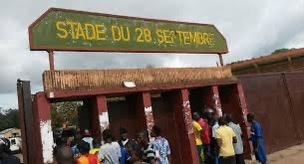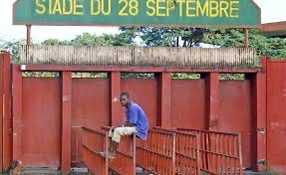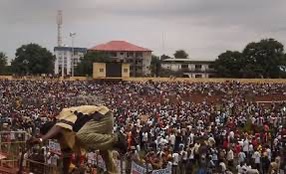Mexico is undeniably experiencing a human rights crisis. Since 2006, the year that the administration of former President Felipe Calderon launched a so-called “War on Drugs”, the State’s armed forces have engaged in confrontations with numerous armed drug-trafficking groups operating across the country. This has fueled a spike in human rights violations and abuses. One of the most telling symptoms of the crisis is the alarming number of missing persons in the country– over 90,000, according to governmental records. Entrenched corruption in the justice system, as well as a lack of resources to adequately respond to the rise in violations, have ensured that perpetrators are rarely brought to account. This has resulted in a climate of generalized impunity.
Against this background, some scholars and practitioners have pondered over the applicability of transitional justice (TJ) measures for Mexico, specifically for the victims of the War on Drugs and the era of government repression known as the Dirty War (1960s-1980s). Certainly, the country does not fit a traditional TJ scenario as it is neither transitioning from an authoritarian to a democratic regime nor moving from a conflict to a post-conflict scenario. And still, in the context of its current human rights and impunity crisis, the Mexican government has implemented some measures and programs traditionally adopted in TJ settings. It also has a record on implementing some TJ measures in the past, albeit with limitations. More importantly, perhaps, the country has a strong presence of victims’ associations calling for truth and justice for those who have endured violations. But beyond debates of applicability– the biggest question is whether the State has the political will to apply a holistic transitional justice agenda.

The TJ agenda under Mexico’s current President
Current President Andres Manuel Lopez Obrador (2018-2024), known as AMLO, hinted at the possibility of adopting transitional justice measures during his presidential campaign. His proposed Peace and Security Plan made peace-building a priority, stating that “it [was] necessary to … adopt models of transitional justice that guarantee the rights of the victims.” His campaign also included what he named “Listening Forums,” consultation spaces where his team met with groups of victims across the country to discuss relevant human rights issues. The Peace and Security Plan noted that these Forums had evidenced that access to justice was a pending issue for most victims, and as such, it would be a priority for AMLO’s administration.
Upon assuming office in 2018, AMLO took some steps that suggested some commitment to victims’ rights and to the adoption of transitional justice measures. With great symbolic value, one of his first actions as President of Mexico was the establishment of the Commission for Truth and Access to Justice for the case of the 43 missing students from Ayotzinapa. The Commission has made important progress in determining some key perpetrators and in continuing the outstanding work that the IACHR did for the case. It has also ensured that the families of the victims and their accompanying allies actively participate in its implementation. But indeed, the work of the commission is limited to the extent that it is addressing a singular case. It might even be argued that it is creating an unfair hierarchy of victims, by securing access to truth and justice for a small group, while excluding access for the broad majority.
Another important development has been the establishment of the National System for the Search of Missing Persons. It comprises a federal-level search commission, state-level search commissions for all Mexican states, and specialized units within state-level prosecution offices for the crime of disappearances. Innovatively, the law separates the search for the missing persons from the criminal investigation, so that the search is not delayed. Moreover, the law acknowledges that disappearances might be committed by state and non-state actors, something of much relevance to Mexico, given that the majority of these crimes are committed by the latter.
The creation of the system and the law from which it emanated was the result of lobbying efforts by the families of missing persons and their international and local allies. At the start of his administration, AMLO appointed Karla Quintana, a renowned human rights expert, as the Head Commissioner for the National System. Under her leadership, the System has taken important steps, such as drafting a standardized protocol for the search of missing persons, carrying out dozens of open-field searching missions across the country, and creating a center for the identification of human remains in northern Mexico.
Along with the System, AMLO’s administration also approved the creation of an extraordinary mechanism for forensic identification, known as MEIF. It is yet another example of a measure commonly adopted in TJ scenarios. The MEIF was envisioned as a tool to cope with the forensic crisis that the country is experiencing, by which an estimate of 52,000 unidentified bodies lie in government facilities, like burial pits and morgues. Presumably, some of those bodies belong to those missing in the country. This past month, AMLO also announced the creation of the “Presidential Commission for Truth, Justice, Reparation, Memory, and Non-Recurrence” for the victims of the Dirty War period. The name suggests a broad mandate seeking to address multiple victims’ rights. Yet, as the mandate has not been published, it remains to be seen what this new commission will seek to accomplish.
These actions show some degree of political will to address the human rights crisis of the country, through the adoption of measures traditionally associated with transitional justice. However, the scope of these measures is mostly limited to the fulfillment of the right to truth and particularly, to the duty to determine the whereabouts of missing persons derived from this right. The collective aspect of the right to truth is generally excluded from these measures. Moreover, no specific extraordinary programs have been established to guarantee the rights to justice, reparations and non-recurrence for the victims during his administration, suggesting that a genuine commitment to uprooting impunity has been absent.

Truth, justice, and reparation measures in the past
AMLO’s administration is not the first to adopt measures from the transitional justice repertoire. Most notably, former President Vicente Fox (2000-2006) established a special prosecutor’s office, known as FEMOSPP, to investigate and prosecute federal authorities implicated in crimes committed during the Dirty War. Unlike AMLO’s, Fox’s administration took place during a transition period, marked by the end of the PRI-party regime, which ruled the country for over 70 years. FEMOSPP opened between 700 to 1000 investigations leading to around a dozen indictments; yet it is unclear whether it achieved any convictions. Beyond criminal investigations, it also published a large report –similar to one that would be published by a truth commission–detailing the context in which violations took place. While it was a first notable effort to apply transitional justice measures in Mexico, its results were limited.
Mexico also has a precedent of two truth commissions at the state level. The first one was established in 2011 in Guerrero, a state that experienced the rise of guerrilla movements and a consequent wave of government repression during the Dirty War. (It is also the state where the Ayotzinapa case took place, suggesting the urgent need for guarantees of non-repetition). In 2014, the Commission concluded that the State had committed enforced disappearances, torture and extrajudicial killings. The second commission was established in 2014 in Oaxaca, in response to the government repression against a broad coalition social movement known as APPO. Here, the commission concluded that the local government had been implicated in human right violations.
During the administration of Enrique Pena Nieto (2012-2018), and following nation-wide mobilizations, the government approved the Victims’ Law, which established the National System for Attention to Victims. Akin to Colombia’s victims’ system under law 1448, the Mexican system consists of state-based commissions across the country that may provide victims with access to assistance measures, legal support, and reparations. The implementation of the law, however, has been extremely slow and the System has operated with insufficient budget and personnel, making access to benefits for victims difficult. In spite of its operational issues, the System is yet another notable effort to respond to the mass victimization that has come with the rise in violence in the country and that is typical to transitional justice scenarios.
Overall, these scattered measures have contributed to the fulfillment of the rights to truth, justice, and reparations to some victims in Mexico, albeit in an insufficient manner. The vast majority of victims, however, have remained excluded, and those who were able to access benefits did so in a limited form.
Transitional justice in Mexico? Some steps forward, many more ahead
To remedy its situation of generalized impunity, Mexico has adopted measures traditionally associated with transitional justice contexts. In previous administrations, the government has experimented with the creation of a special prosecution office, two local truth commissions, and the establishment of a reparations system, which is still operating. Under current President Lopez Obrador, important actions have been taken to fulfill the right to truth of the families of missing persons.
Notwithstanding the progress made by these initiatives, none have been adopted as part of a holistic transitional justice agenda. This has limited the ability of these measures to positively contribute to the dismantling of structures of impunity, the meaningful redress of victims, and the cease of violence in the country. If indeed the current administration has taken important steps to fulfill the right to truth, the State has a huge debt when it comes to the right to justice. Out of the 92,000 cases of missing persons, only 35 have reached a guilty verdict. As such, it is not surprising that the families of the victims have little hope that perpetrators will ever be brought to account. Firm steps should also be taken to guarantee the non-repetition of violations. Of particular concern is the increased militarization of the country and the continuation of the War on Drugs. It is unlikely that disappearances stop as long as a militarized approach to security continues, as it has been proved that this strategy has been a key factor for the increase of violence and the empowerment of drug cartels in Mexico. In the meantime, victims will continue to mobilize and demand that their rights to truth, justice, and reparations are fulfilled. It is because of their relentless commitment to the fight against impunity that the government has been pushed to take some action. Some public servants within the government have been key allies in ensuring these measures are implemented. And still, a holistic transitional justice agenda will remain an unlikely possibility for Mexico without the firm commitment of the State –as a whole– to uproot impunity once and for all.
Camila Ruíz Segovia, Correspondent in Mexico.





